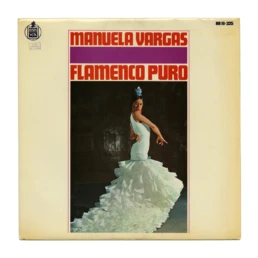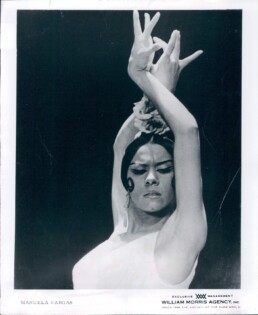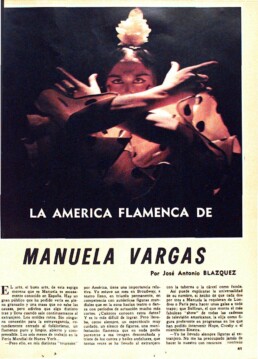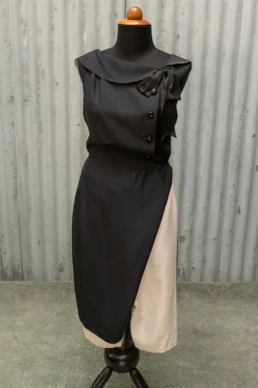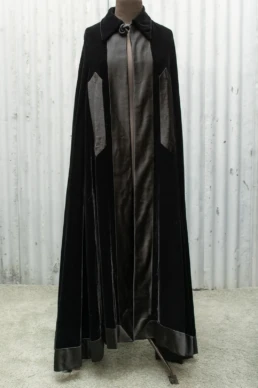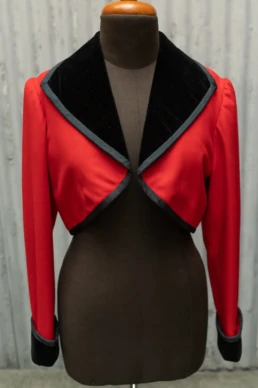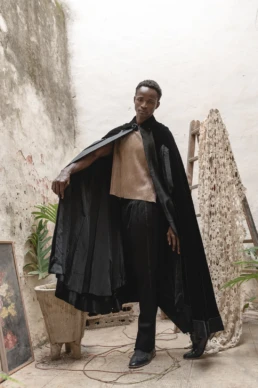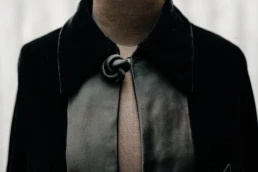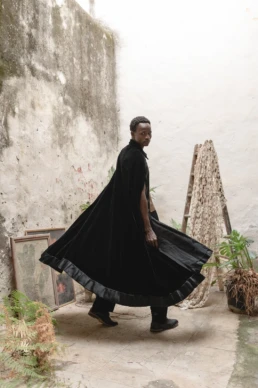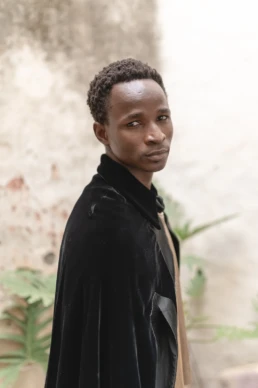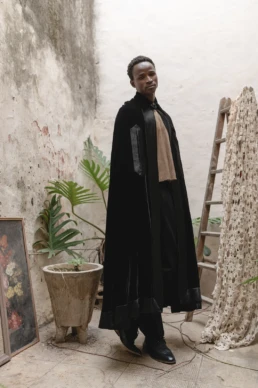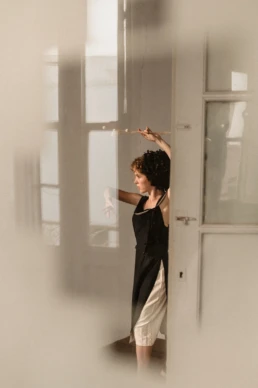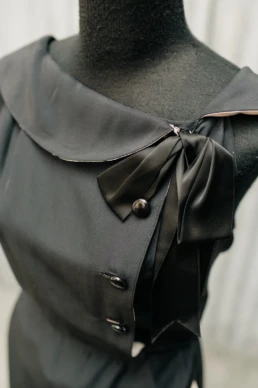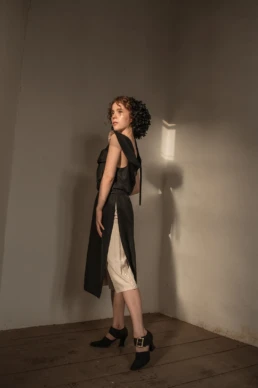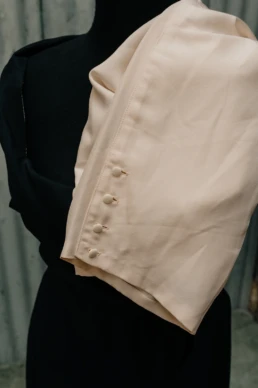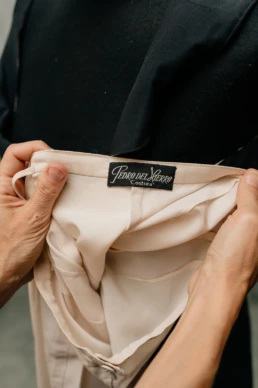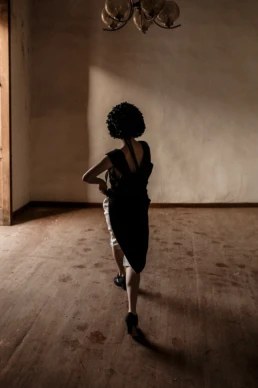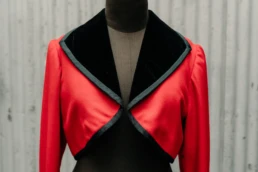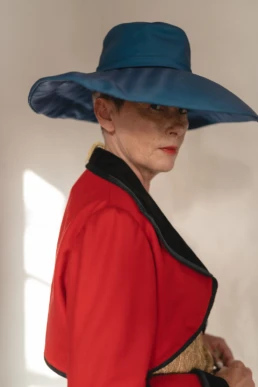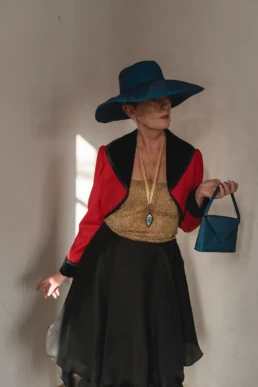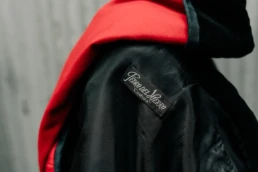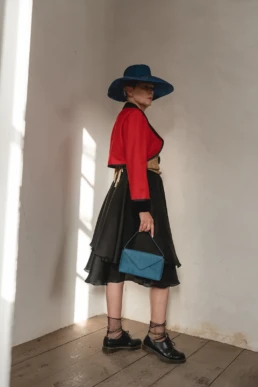Can you tell us something about your mother Manuela Vargas?
Our mother was honored many times as the most elegant woman in Spain during galas organized by ¡Hola! magazine, and Vogue.
She was Pedro del Hierro’s muse and this generated a great friendship between them for many years to the point that it was a privilege for him because of the character she was and how she wore her clothes.
Our mother dressed not only Pedro del Hierro, but also many Haute Couture designers such as Balenciaga, Pertegaz, Christian Dior, and Yves Saint Laurent.
Our mother walked the runway in Cibeles with Roberto Verino at the time she was shooting the film “La Flor de mi secreto” with Almodovar along with Joaquin Cortes.
The red dress Manuela wears in Almodovar’s film was designed by Sibylla.
Manuela was a flamenco star, she started at a very young age, she was from Seville, she studied with a famous professor, Enrique El Cojo, then she went to Madrid where she danced in the Café de Chinitas, where she did a flamenco de tablao and then she was growing as an artist and boomed when she went to New York and in a festival, she met Miguel Narros, who was then the director of Teatro Español.
When you align the planets and bring great artists together it happens that you create an impressive product: the opera of Medea (1984). With Miguel Narros as theater and artistic director, and our mother as a dancer.
Our mother fused flamenco with theater and innovation. In this way, she managed to take flamenco to many more countries and internationalized it. She managed to give flamenco a lot of repercussions and in this way she made people understand what flamenco really was.
As for clothes, our mother had a peculiarity: if you in 2022 could find clothes by a designer like Pedro El Hierro and in perfect condition on top of that, it is because she was an unconditional lover of fashion.
When you walked into her dressing room it was like entering a museum. She had a whole closet of Pedro del Hierro shoes, all impossible, beautiful, size 39, each pair stored inside a bag with paper inside to give them shape, it looked like she was levitating in her shoes and not walking!
All of her clothes were also beautifully kept, with care, she had so much love for each dress because she was passionate about it.
For stage plays she was concerned about having the best designer, everything had to be perfect, her “bata de cola” when she went on stage was a work of art.
She was a perfectionist.
When she came out of her room she was a marvel, always flawless, with an impeccable bun; it is no accident that the two of us, Rocío and Macarena, love hair combed back.
For her, less was better, she had this fine, harmonious, understated elegance. The only thing she repeated was the color of her makeup.
When she walked into a room, she had a light of her own and everyone noticed her energy.
Because of this sober taste, she fitted in perfectly with Pedro del Hierro and his linear designs, with unique colors.
Do you have any memories or anecdotes to share about the clothes we bought?
The dresses we got were 3 garments by Pedro del Hierro.
In Pedro del Hierro’s fashion shows, the models were all skinny girls, very stylized, very ballerinas, he used black models with long necks, somewhat androgynous, linear, straight, and the designs fit very much with our mother’s style.
Pedro del Hierro was an artist.
Impossible clothes, they were for skinny women, they had a lot of glamour.
Then he had shoes that came to us that were for Cinderella feet. He had these designs that were so innovative, glamorous and so impossible to dress in everyday life. He was the only one in this era who risked not being commercial. He made exclusive and unique collections, Pedro’s clothes were one and no more than one.
They were close friends.
What does it mean to you to see a garment come back to life and be revalued, conveying a cultural and poetic message?
Beautiful things last over time.
We feel satisfied and proud to see a dress from our mother come back to life, especially because, I speak for me (Macarena) I see her inside that dress, I see my mother as very idealized.
The clothes convey the personality of the person who wore them, their own story.
